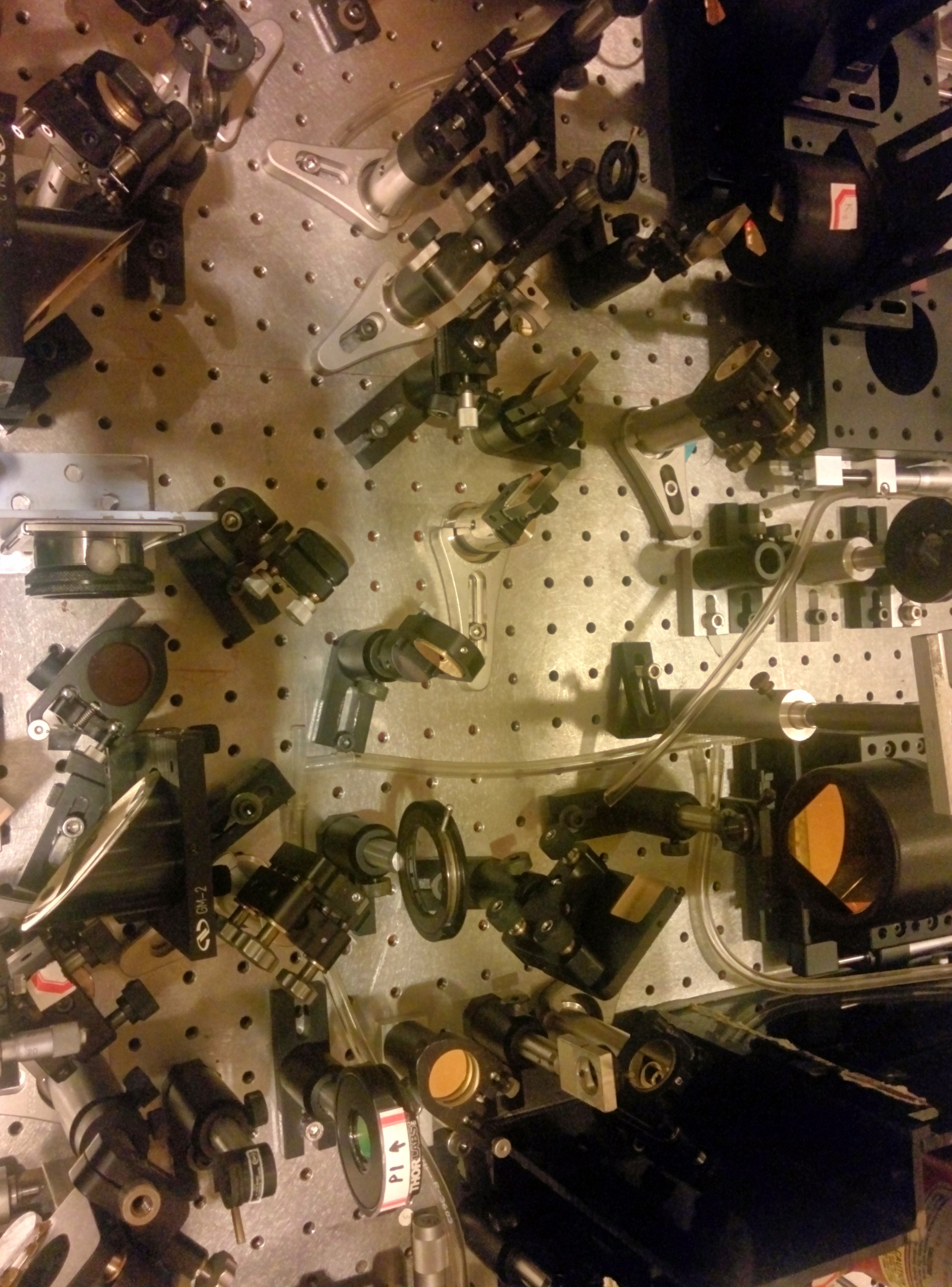Our main methodology is the state-of-the-art two-dimensional vibrational spectroscopy (2D-IR) where we impulsively excite selected vibrational modes of the molecule and track their ultrafast relaxation into different vibrational modes, into the modes of an interacting partner molecule, and dissipation into the solvent. Spreading the spectral information in two dimensions allows to reveal the correlations between molecular motions, and to resolve congested spectra arising from multiple molecular conformations. At the same time, the instrument response of our 2D-IR apparatus is fast enough to resolve different relaxation dynamics of these conformations and their inter-conversionkinetics. Figures below schematically summarize how the four-pulse 2D-IR experiments are conducted.


Note, that mid-infrared light is invisible to human eye, and no alignment cards in that region are available!



